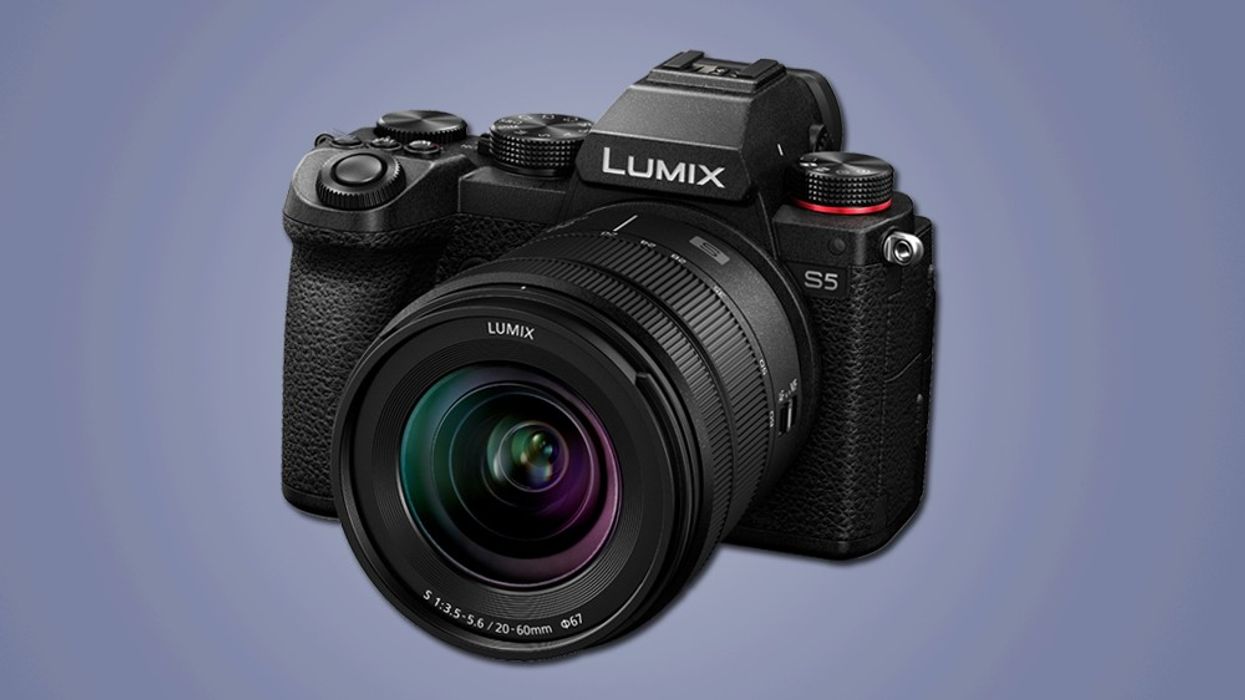The Panasonic S5 is Officially Announced. What Are Your Thoughts?
Panasonic's LUMIX S5 has arrived.

The LUMIX S5 is Panasonic's latest full-frame mirrorless camera. Though it may not pack the same "Netflix approved" punch as the LUMIX DC-S1H for filmmakers, it has loads of features that are becoming current industry standards among hybrids.
Built around a 24.2MP 35mm full-frame CMOS sensor, the S5 can record 4K 4:2:2 10-bit internal video at 30p/25p and 4K 4:2:0 10-bit at 4K 60p/50p. But there's a 30-minute time limit when recording in those formats. That's one key difference when comparing it to the S1H. However, when recording 4K 4:2:0 8-bit at 30p, Panasonic promises there is no limit on record time. External recording via HDMI will provide 4K 4:2:2 10-bit at 60p/50p.
Video formats can be recorded in .MOV or .MP4 containers. In MOV full-frame mode, 4K UHD at 29.97p or 23.98p is at 150Mbps 4:2:2 10-bit LongGOP or 100Mbps 4:2:0 8-bit LongGOP. Both shoot H.264/MPEG-4 AVC. In MP4 full-frame mode, 4K UHD at 29.97p or 23.98p is at 72Mbps 4:2:0 10-bit LongGOP, H.265/HEVC. There's also an option for 4K UHD at 29.97p or 23.98p at 100Mbps, but it's at 4:2:0 8-bit LongGOP, H.264/MPEG-4 AVC.
Additionally, Panasonic is providing 35 conversion LUTs for VariCam cinema cameras that can be downloaded for free to use with the LUMIX S5. This makes it easy to color match tone and footage when recording V-log with other Panasonic cameras.
The camera's in-body image stabilization will provide you with smoother footage, and when combined with L-mount lenses that have O.I.S. (Optical Image Stabilizer), it can offer up to 6.5 stops of shake correction. IBIS and O.I.S. will work in video and still mode.
Essentially what you're getting here is a slimmed-down S1H. Panasonic took away the 5.9K internal recording and 12-bit HDMI output and repackaged the body as the S5 to compete with the Sony a7S III and hybrid cameras alike. The difference between the S5 and the a7S III is the Sony is going to have better low light performance and autofocus capability, while the Panasonic offers dual base ISO and color science that's going to be slightly better straight from the camera. But as you know, color is subjective, and better yet, today's cameras can be graded to match any preferred look.
While the L-mount alliance between Leica, Panasonic, and Sigma provides shooters with a variety of glass options, Sony has dozens of E-mount options and other lenses can be adapted to either body. It really is a good time to be a shooter.
Panasonic Lumix DC-S5 Mirrorless Digital Camera

- Sensor Size: Full Frame
- Resolution: 24 MP
- Max Video Quality: 4K 60fps, 4:2:2 10-bit
- In-Body Stabilization: 5-Axis Digital
- Special Features: Bluetooth, Mic Input, Touchscreen, Anamorphic mode support
- Wi-Fi: Yes
- Price: $1998
The LUMIX S5 will start shipping in September for $1,999 for the body only and $2,299 with a Panasonic S 20-60mm kit lens. With the release of the S5, the follow up to the GH5 could be next from Panasonic.
So what are your thoughts on the S5? Let us know in the comments below.
















